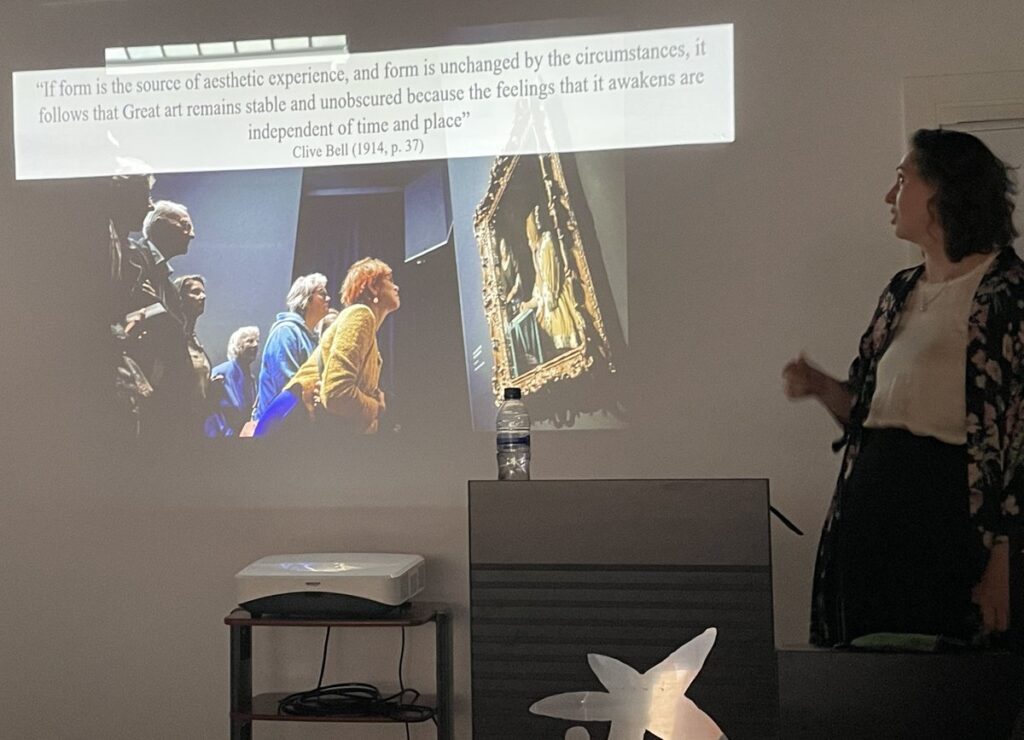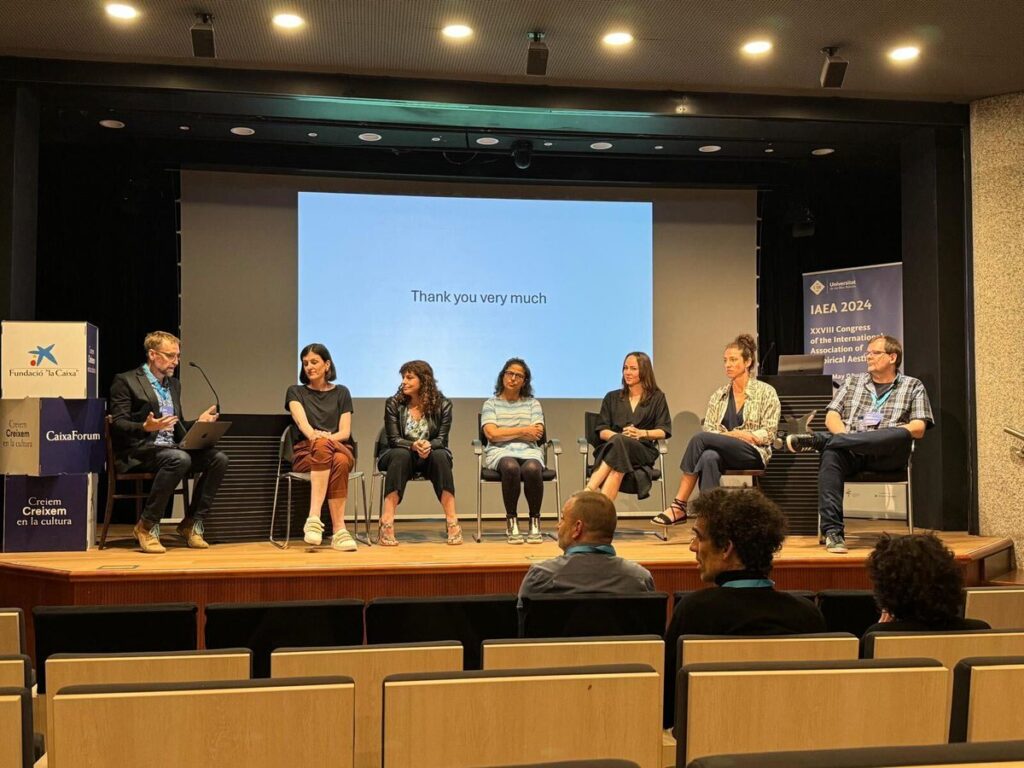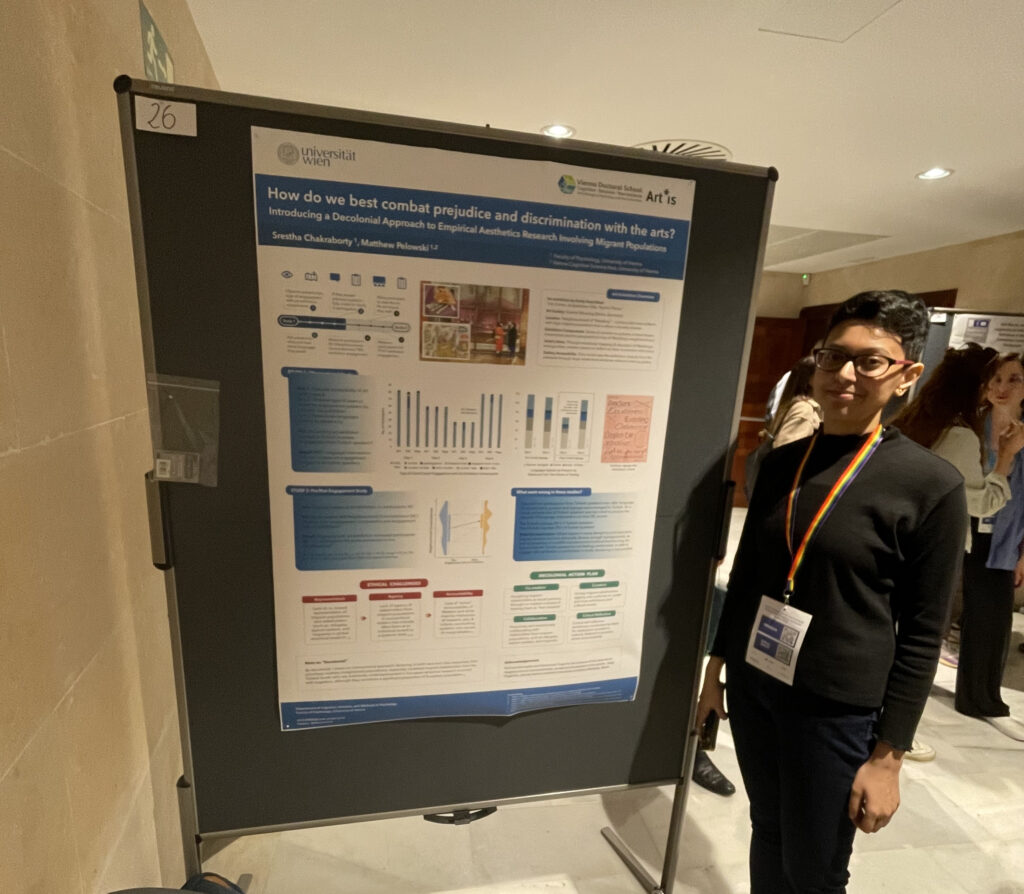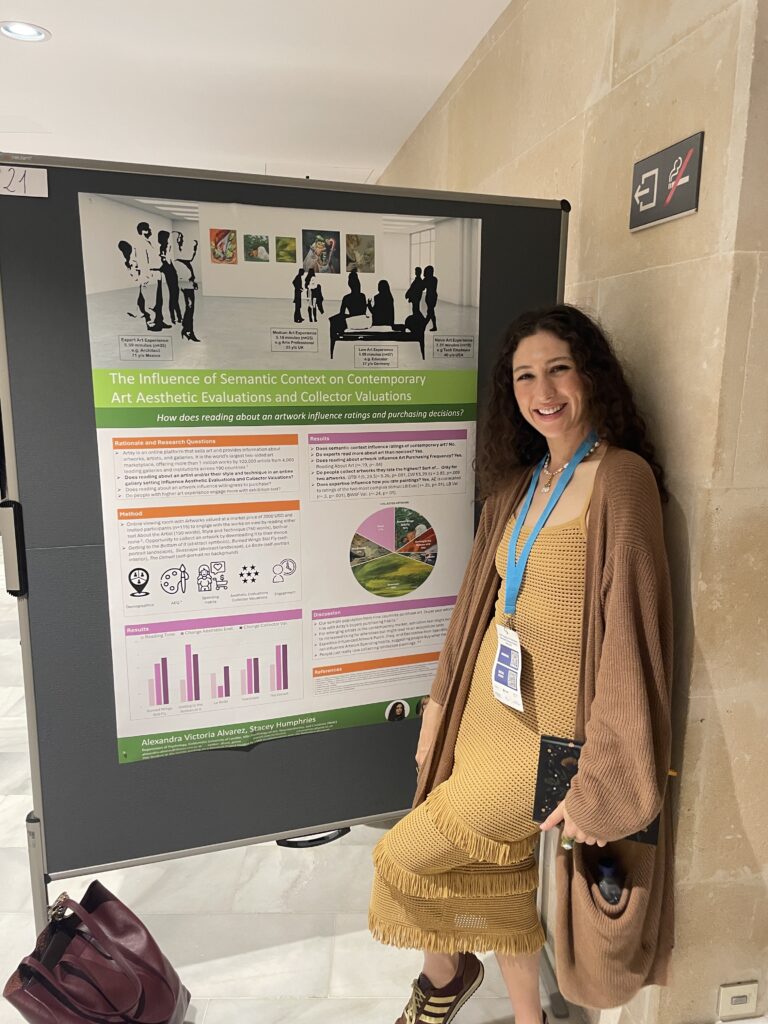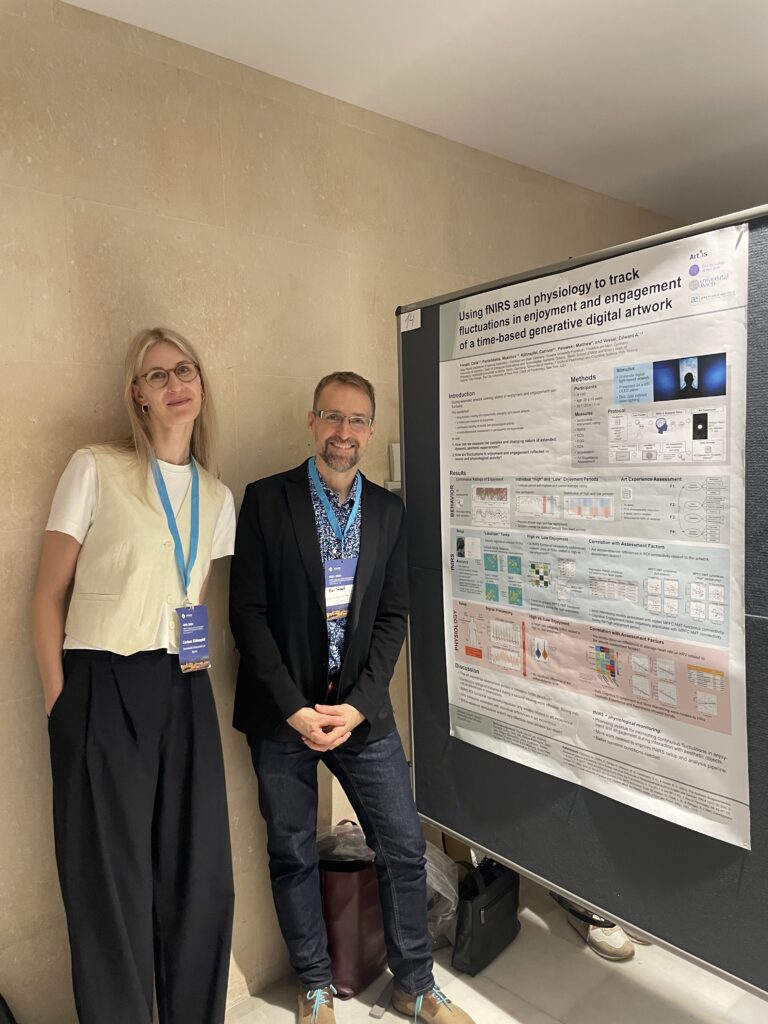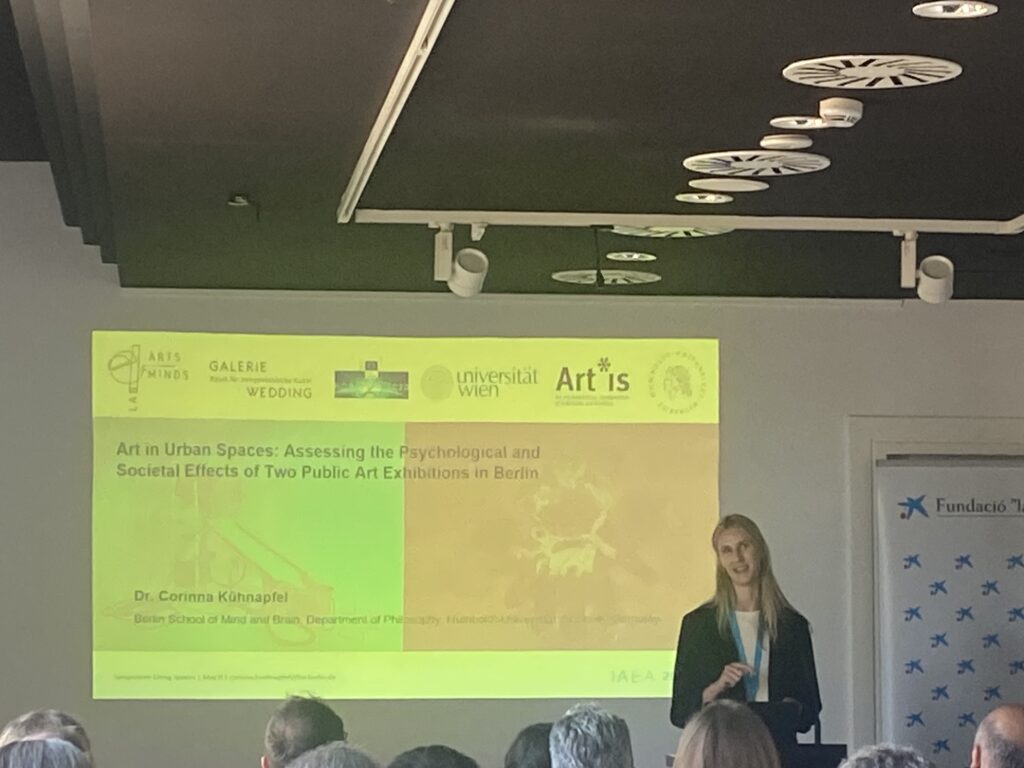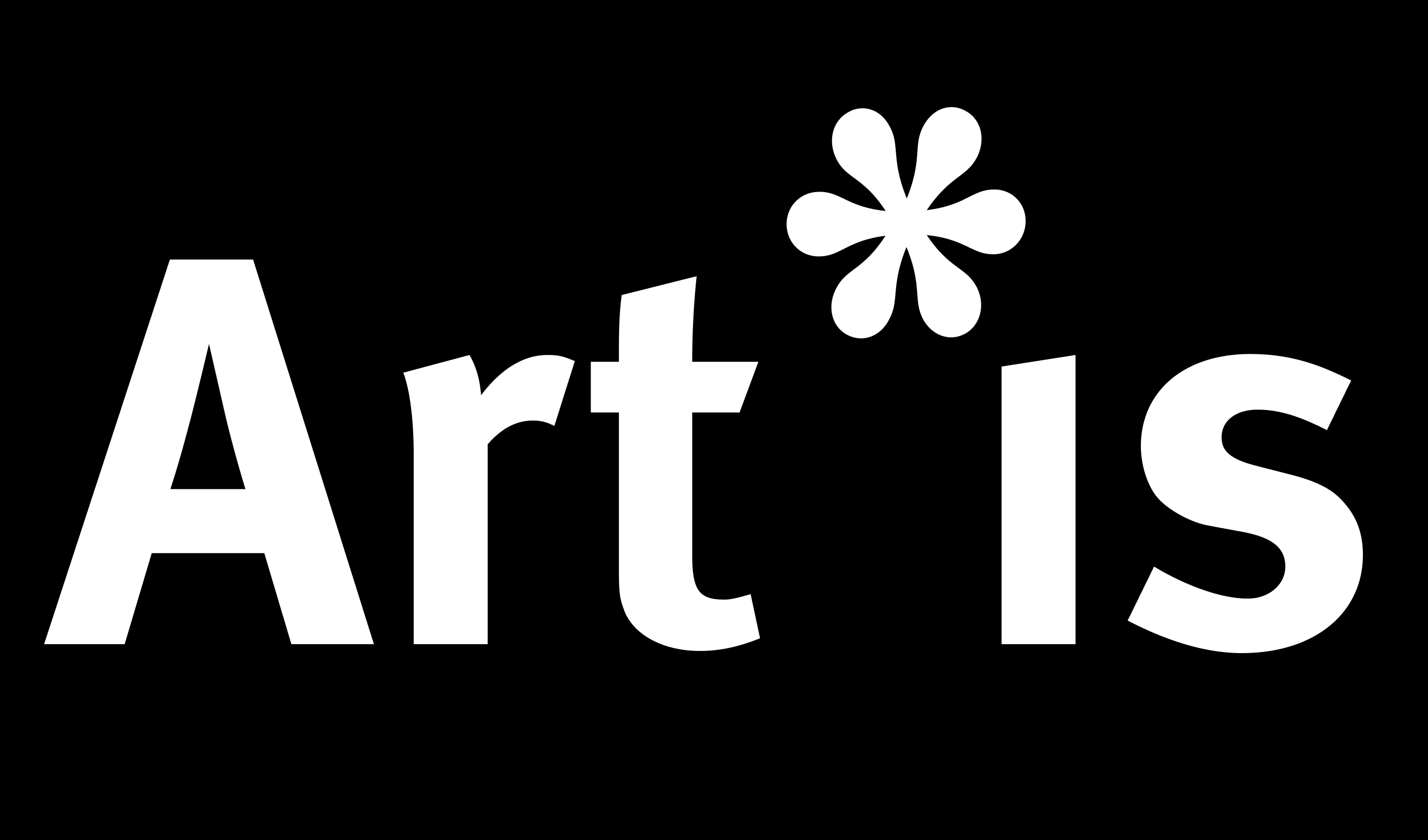The 2024 conference of the International Association of Empicial Aesthetics took place during May 08-10 in Palma, Mallorca. The theme of IAEA 2024 was “Present Challenges and Future Horizons.”
Recordings of the main sessions can be found here and here.
The various presentations of the ARTIS team included:
- Across minds and masterpieces: A multi-brain approach to identifying ‘universal resonance’ to art – Theresa Demmer (talk)
- The Path to a Matched Activity-based Control Condition for an Arts-based Intervention for Highly Sensitive People– MacKenzie Trupp (talk)
- While viewing the artwork, I felt… Using network and latent profile analyses to identify and characterize supraordinate varieties of art-experience – Stephanie Miller (talk)
- Art in urban spaces: Assessing the psychological and societal effects of two public art exhibitions in Berlin – Corinna Kühnapfel (talk)
- How do we best combat prejudice and discrimination with the arts? Introducing a Decolonial Approach to Empirical Aesthetics Research Involving Migrant Populations – Srestha Chakraborty (poster)
- The Influence of Semantic Context on Contemporary Art Aesthetic Evaluation and Collector Valuations Alexandra Victoria Alvarez (poster)
